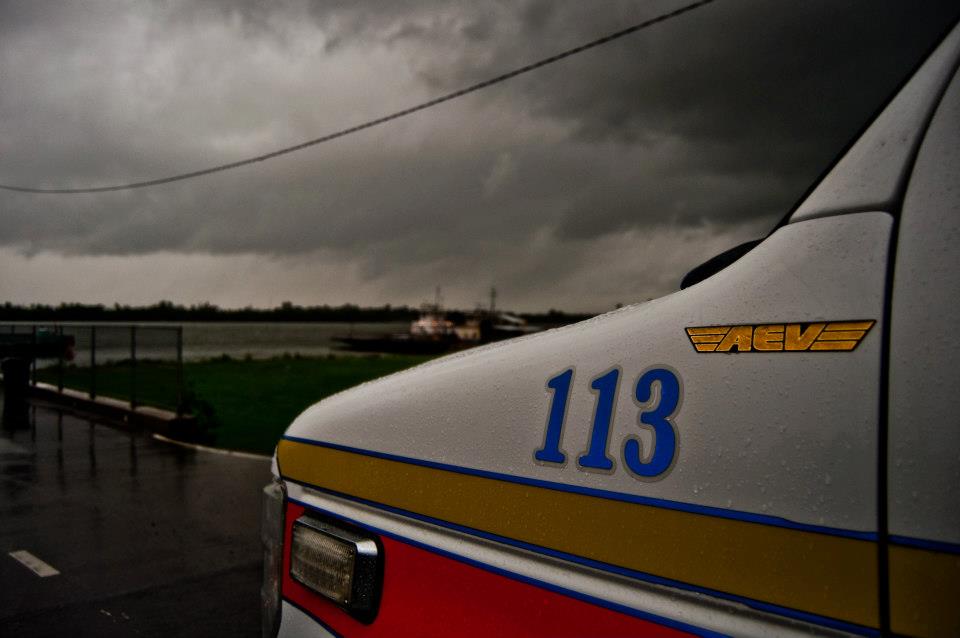 In this edition of The Other Side of EMS we head down south to the Gulf coast during a hurricane to find out what to expect when you volunteer for storm duty.
In this edition of The Other Side of EMS we head down south to the Gulf coast during a hurricane to find out what to expect when you volunteer for storm duty.
I have worked in north central Louisiana for 8 years now and have been deployed to 4 different storms. I have taken part in hurricanes Dean, Katrina, Gustav and now Isaac. Each deployment was a unique experience with completely different mission tasks. The main advice I can give anyone traveling down here to help out is to not expect anything and to plan for everything.
My Hurricane Isaac Response video – all clips in this video are my own.
What to bring
Plan to be gone from 1 to 2 weeks. Every deployment we are told to expect to be gone for a week but every time it is extended to at least 2 weeks. Keep this in mind if you have medications. With the loss of power or flooding pharmacies are not open and usually have delays getting shipments even after the lights come back on. During Katrina and Isaac we found ourselves sleeping in the truck for 2 or 3 nights so a blanket and pillow is a must. Although its impractical bringing insulin and dry baby formula would have made a massive difference in Katrina. The military dropped plenty of MREs to the crowd but the babies were hungry too.
Considerations
Bring your cell phone. Hurricanes have a tendancy to take out communications and you can’t tell which forms will still work. During Hurricane Katrina cell towers as well as radio towers went down. We were pretty much left with our truck to truck radios. I think the cellular providers have since taken steps to prevent this. Even as the power went out in Belle Chasse during Isaac Verizon’s towers never faltered. I can’t say the same for AT&T and even the state radios we were issued.
Finding diesel for the trucks WILL be a problem when the storm hits and maybe for a few days after. In Belle Chasse there was one brave gas station that stayed open on generator power, at least until it caught on fire. Be sure to fill your tank up at every opportunity. In a pinch find military personel, they can help find you some. If all else fails find a truck and a garden hose, you are in fact in a state of emergency.
Registration
 When your unit deploys to Louisiana your first stop will be to register with the Louisiana Bureau of EMS, this will be your governing body for the duration. The registration location is usually located at the bureau’s office in Baton Rouge however during Hurricane Gustav this was further north in Alexandria. You will not only be registering everyone in your group but also your ambulance and your equipment. To expedite things your team leader needs to have a packet ready on each person to include copies of drivers licenses, copies of certification cards and cell phone number.
When your unit deploys to Louisiana your first stop will be to register with the Louisiana Bureau of EMS, this will be your governing body for the duration. The registration location is usually located at the bureau’s office in Baton Rouge however during Hurricane Gustav this was further north in Alexandria. You will not only be registering everyone in your group but also your ambulance and your equipment. To expedite things your team leader needs to have a packet ready on each person to include copies of drivers licenses, copies of certification cards and cell phone number.
In addition to the crew packets you can speed things up by having your stretcher serial number, yes there is one, and monitor serial number ready, although they may want to actually see these. Each team will be issued a state 700 radio that you must protect with your life. Each unit will be given an id number to tape to your windshield. From this point out you receive your orders from the bureau and your team will likely leave the building with your first mission. This is where things get unpredictable. Your missions can range from manning a Red Cross shelter, evacuation of a nursing home, or to assist with an overwhelmed 911 system.
Forward Hospital
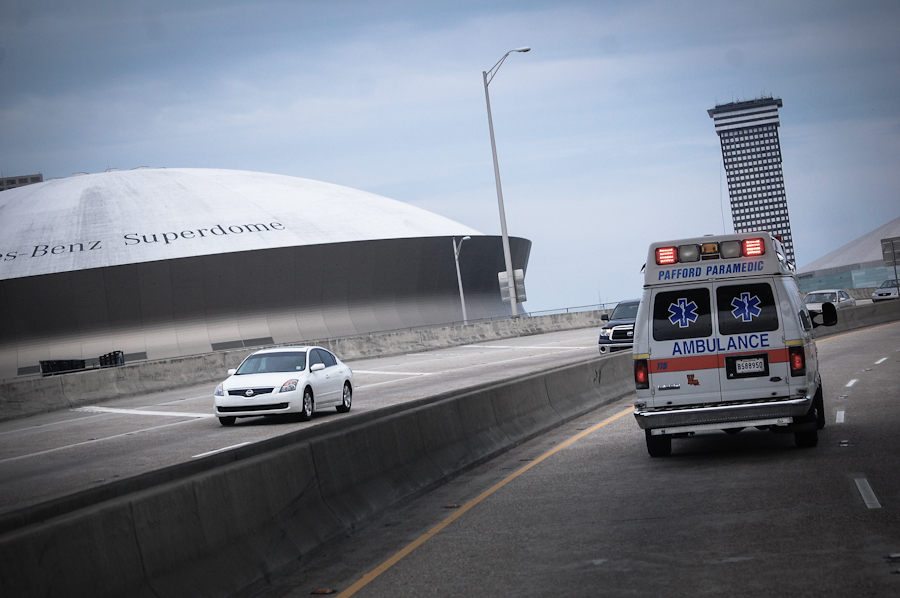 Sometimes in extreme situations your mission might be to assist with a forward hospital or rescue collection point.
Sometimes in extreme situations your mission might be to assist with a forward hospital or rescue collection point.
At Hurricane Katrina our team arrived in Baton Rouge the day prior to landfall ridding out the storm at the bureau. When it was safe to travel south into New Orleans we did so at slow pace. Our mission was to reach the dome and setup triage and treatment. 12 hours later we arrived at the dome. To my surprise we were the first medical crews there. We established triage and treatment areas on the back loading docks.
During the night we triaged around 1500 people as they arrived by helicopter, military trucks and by foot. We soon got word that no transports would be leaving for the next 24 to 48 hours. This presented new problems. There were patients that needed dialysis including emergency dialysis, diabetic patients that had been without insulin for days, and patients on ventilators. Imagine running a hospital with only the stuff from the ambulance. The rules we are used to were no longer valid. A new triage color was created, blue. This was for the patients that would normally be red but we could not help. The blue patients were not expected to make it through the night.
One volunteer single handedly saved the lives of 2 blue patients. She sat in a chair in between the 2 vent patients and bagged them both all night long.
There was one exception, one person did get transported out that night. A woman in labor came through triage. She was 9 months pregnant, grav 4 para 3, all had to be c-sectioned. We managed to get the military to fly her out that night. By morning the flood waters began to rise and we were pulled out of the dome.
At no other time in my ems career was the phrase adapt and overcome more true.
Evacuations
 Most evacuations occur prior to the storm making landfall. During Hurricane Gustav we teamed up with Acadian Ambulance and helped evacuate nursing homes. One or two bed bound patients in the back and fill the rest up with the ambulatory. Usually these patients would be taken a few hours away to another facility. Any evacuations that are done after this point will be in an emergent fashion.
Most evacuations occur prior to the storm making landfall. During Hurricane Gustav we teamed up with Acadian Ambulance and helped evacuate nursing homes. One or two bed bound patients in the back and fill the rest up with the ambulatory. Usually these patients would be taken a few hours away to another facility. Any evacuations that are done after this point will be in an emergent fashion.
During the storm facilities can be damaged or flooded causing the need for emergency evacuation. A tornado spun off of Gustav and struck a hospital during the night so we convoyed in and loaded there patients up.
Katrina was so underestimated that evacuation missions made up the majority ems activities. After being pulled from the Super Dome we went straight to were the interstate dipped below the flood water to receive bed bound patients from Tulane Hospital that would arrive by boat. We loaded up our patients and drove straight to Baton Rouge dropping them off at the LSU Pete Maravich Assembly Center (The P-MAC). The rest of my time at Katrina was evacuating people from New Orleans, most would come from evacuation points and other facilities including Baptist Memorial.
Shelters / 911
Every Red Cross Shelter must have ems present. Most larger shelters or any shelter with special needs patients will have a treatment area manned by ems. This was one of our primary missions during Isaac. Plaquemines Parish had 3 shelters set up in Belle Chasse which is 10 minutes south of New Orleans. We arrived before the storm hit and would stay in Belle Chasse for the next two weeks.
 There is not much to do at a small shelter. Ours had maybe 20 people. Luckily I still have an unlimited data plan on my phone and Verizon does not throttle because I stayed on Netflix.
There is not much to do at a small shelter. Ours had maybe 20 people. Luckily I still have an unlimited data plan on my phone and Verizon does not throttle because I stayed on Netflix.
Our other primary mission was to integrate with Plaquemines Parish EMS and run 911 calls. Being right on the coast Plaquemines call volume tends to increase with any hurricane. After the storm we were needed even more than before. They lost units to flood waters and some of there crews were isolated, cut off by flooding.
Other units from our company were stationed in New Orleans and other locations helping with their 911.
The Bad
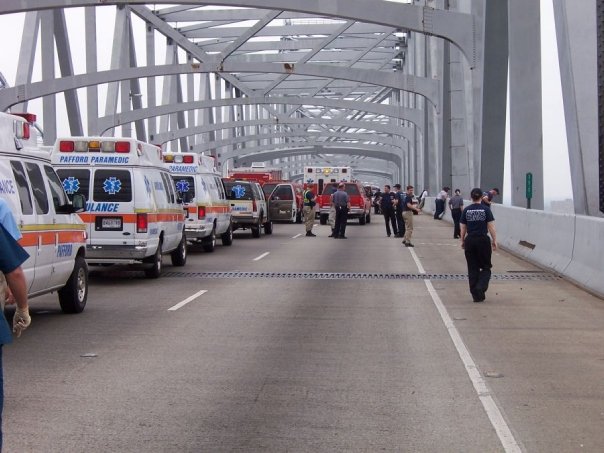 Hurricane Katrina was a good bad experience, if that makes sense. I am glad I went but it left me with a little PTSD. I never understood exactly what that was until then.
Hurricane Katrina was a good bad experience, if that makes sense. I am glad I went but it left me with a little PTSD. I never understood exactly what that was until then.
After being pulled from the Super Dome and waiting on the patients to arrive by boat from Tulane I was staring off into the flooded city when an old man leaned over and said “if you stare into that water long enough you will see them bodies”. That was when I realized the magnitude of Katrina was more than I had expected.
A lady walked up with a can of dry baby formula. She had no way to open the can and no water to mix it with. I managed to open the can and give her plenty of water. I wanted to tell her to get in for a ride to Baton Rouge.
On another day we were stationed on top of a bridge near the dome waiting to enter the Garden District to evacuate Baptist Memorial when a couple approached with an infant that had just died. It was obvious that the cause was dehydration due to the sweltering heat and lack of water. A horrible effect of underestimating a hurricane.
Once cleared to enter the Garden District we proceeded to into the neighborhood when one of our units was shot at. We stopped while our police escorts raced forward and dealt with the situation. We arrived at the corner of St. Charles and Napoleon St. were there was a Rite Aid being looted by local residences and police. I know what you are thinking but hold on and hear me out. The police officer was breaking into the pharmacy to help a resident get seizure meds for his mother who had already seized multiple times. The rest of the people were mainly after anything to drink, water, fruit punch, Dr Pepper, or whatever. At this point looting a store was done for survival not greed. Its a shame officers got in trouble doing this, they had no supplies either. A large number of people arrived by boat to be evacuated and we didn’t have enough trucks for them all, or so we thought. That run we took 11 people packed tightly into our type 2 ambulance.
The situation had deteriorated to the point that staying and treating patients did no good. The only effective action we could take to save lives was to get as many people out of New Orleans as possible and that is what we did.
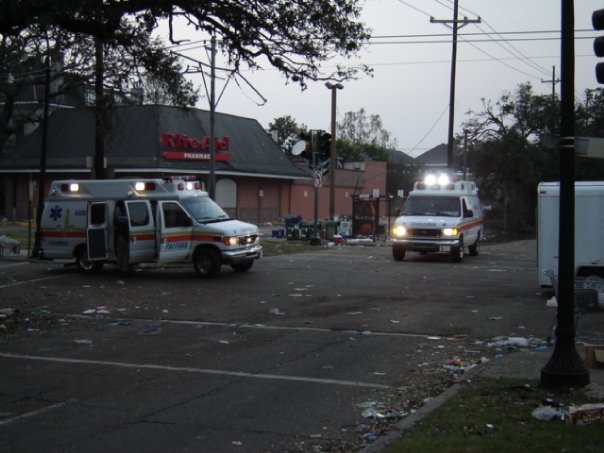 From then on we made trip after trip taking people to Baton Rouge. Each time the ride into New Orleans became more stomach turning and the ride back more somber and exhaustive. My wife, who was my partner, and I would reflect on the days events and I could tell it was taking its toll on her. People were dying waiting to leave the city and it all could have been avoided. On night 7 after the storm we arrived at the PMAC with a load of patients and were greeted by a lady asking if we had any children without parents. I will never forget that. The situation had actually deteriorated to that point. I looked at my wife who was holding back tears and told her it was time to go home and hug our kids.
From then on we made trip after trip taking people to Baton Rouge. Each time the ride into New Orleans became more stomach turning and the ride back more somber and exhaustive. My wife, who was my partner, and I would reflect on the days events and I could tell it was taking its toll on her. People were dying waiting to leave the city and it all could have been avoided. On night 7 after the storm we arrived at the PMAC with a load of patients and were greeted by a lady asking if we had any children without parents. I will never forget that. The situation had actually deteriorated to that point. I looked at my wife who was holding back tears and told her it was time to go home and hug our kids.
It was another 2 weeks before we could get back on the truck. Our company did a debrief a few days later that really helped. It would be another 7 years before I went back to the Big Easy but only because Hurricane Isaac was bearing down.
Katrina for me was a rough and stressful deployment that left me jaded but I am glad I went.
The Good

 A hurricane deployment is a good experience and will show you just how versatile an EMS system can become.
A hurricane deployment is a good experience and will show you just how versatile an EMS system can become.
I usually enjoy any ems activity that will get me off of the truck for awhile, not that I don’t like working on the ambulance but its always good to change it up.
During the storm can be fun, just sit back and enjoy or play some football.
One last plus is the fact that FEMA pays very well.
I encourage you to come on down and help out if given the opportunity. Whether you have a good experience or a bad one during your deployment to a hurricane it will be one of the highlights of your ems career that you will tell your grandkids about.
Katrina Response video – clips taken from youtube



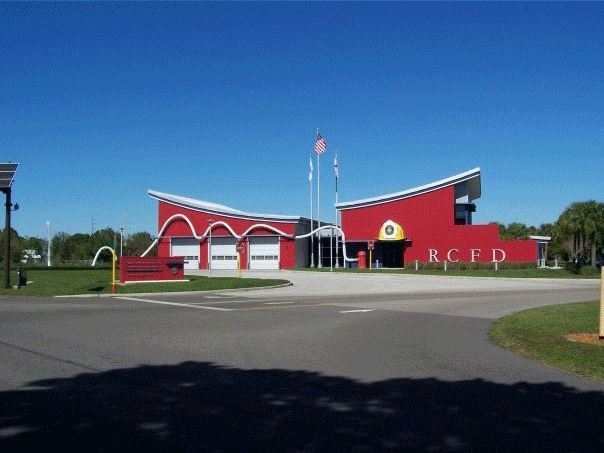
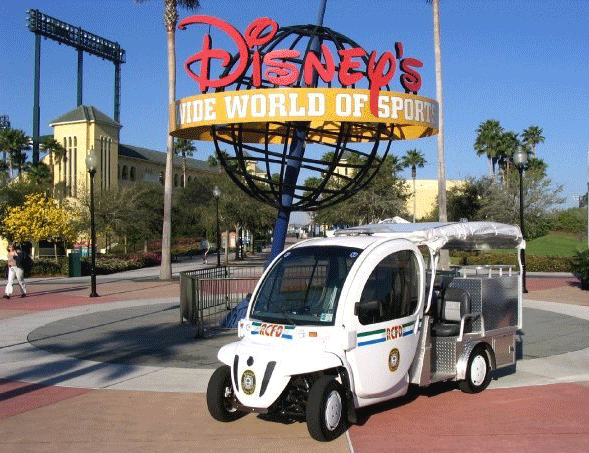

 Jeffrey Armstrong is an EMT of 18 years and works full time as a MARC team member. To Jeff working as an EMT in the Walt Disney parks is more like an adventure than a job. Everyday Jeff meets and treats people from all walks of life and backgrounds. There are no ‘frequent fliers’ as there are in most systems. But what most of his patients do have in common is their chief complaint, or actually the reason for their chief complaint. Walt Disney World is located in Florida and if you have visited any of the southern states you know that the summer heat and humidity can be brutal. As you would guess Jeff treats many patients with heat injuries but a larger number of patients have pre existing conditions that are exacerbated by the heat. One other unique patient care hazard to EMS at Walt Disney World is the all mighty dollar. No, not what Disney charges the patient for EMS care, in fact that service is free of charge, but these patients have spent $5,000 or more on this vacation and they flat out do not want to go to the hospital. Jeff says a big part of patient interaction is convincing the patient to go to the hospital. The summer months are definitely the busiest being described as ‘organized chaos’ were Jeff stays busy running back to back calls. There are slow days that these medics enjoy, rain days. While other services would see a rise in calls such as MVAs crews at Disney get to enjoy a little down time.
Jeffrey Armstrong is an EMT of 18 years and works full time as a MARC team member. To Jeff working as an EMT in the Walt Disney parks is more like an adventure than a job. Everyday Jeff meets and treats people from all walks of life and backgrounds. There are no ‘frequent fliers’ as there are in most systems. But what most of his patients do have in common is their chief complaint, or actually the reason for their chief complaint. Walt Disney World is located in Florida and if you have visited any of the southern states you know that the summer heat and humidity can be brutal. As you would guess Jeff treats many patients with heat injuries but a larger number of patients have pre existing conditions that are exacerbated by the heat. One other unique patient care hazard to EMS at Walt Disney World is the all mighty dollar. No, not what Disney charges the patient for EMS care, in fact that service is free of charge, but these patients have spent $5,000 or more on this vacation and they flat out do not want to go to the hospital. Jeff says a big part of patient interaction is convincing the patient to go to the hospital. The summer months are definitely the busiest being described as ‘organized chaos’ were Jeff stays busy running back to back calls. There are slow days that these medics enjoy, rain days. While other services would see a rise in calls such as MVAs crews at Disney get to enjoy a little down time.